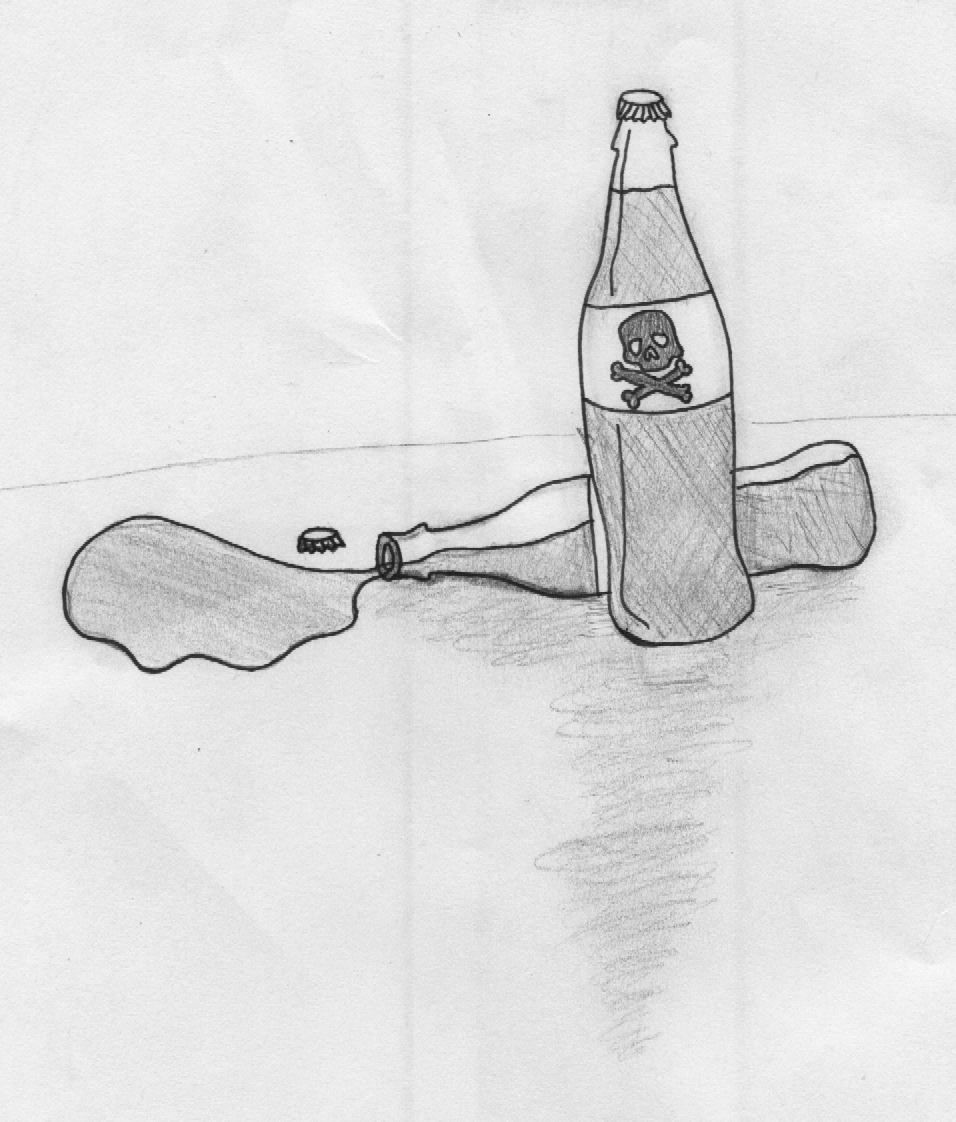Poisoned Pop?
March 19, 2018
Sugar. We know too much is bad for us, yet we are addicted.
This sugar addiction comes from several sources. One cause of sugar addiction is the dopamine release when we consume sugar. Everytime people eat, see or think about sugar, dopamine neurotransmitters send signals to the brain and play a major role in reward-motivated behavior. Dopamine calms you down, and makes you happier. Maybe after a long day of school, that’s why a Burgerville milkshake tastes so good. Another example lies within human biology: sugar is pure energy and was very valuable to our prehistoric selves. Thus, biologically sugar tastes good. Now, however, the ability to receive sugar lies at our fingertips and creates major imbalance in our diets.
When people don’t limit their sugar intake, there are long term negative results such as fatty liver disease, high cholesterol, heart disease, and diabetes. Also, some evidence suggests that cancer is tied to sugar due its harmful attacks on metabolism (insulin helps regulate growth and cancer is the result of uncontrolled growth and multiplication of cells). According to the American Heart Association, the daily limit of added sugars for men is 36 grams or 9 teaspoons, and 25 grams or 6 teaspoons for women. The average American consumes 82 grams or 19.5 teaspoons of sugar everyday. That converts to about 66 pounds of sugar in a year per person.
Before opening a can of diet soda, remember that artificial sweeteners aren’t much better than straight sugar. In diet soda, for example, artificial sweeteners are linked to seizures, multiple sclerosis, brain tumors, diabetes and emotional disorders. The sweetener converts to methanol at warm temperatures and methanol breaks down to formaldehyde and formic acid. Almost all soda may be closer to poison than a sweet beverage.
Sodas like Coca-Cola carry 10 teaspoons of added sugars in a single 12oz bottle — that’s over the recommendation for an entire day. Sixteen micrograms of 4-methylimidazole is enough to pose a cancer threat, and popular brown colas contain 200 micrograms of 4-methylimidazole per bottle. Pop is also bad for teeth because the acids in soda break down the enamel, and the sugar in the soda helps bacteria grow on teeth. Trust me, you’re better off without the sugar crashes and terrible teeth.
The challenge is crushing the addiction. My first tip to anyone trying to limit their sugar intake is to cut added sugars out of their diet for about a month. To do this, you need to know what sugar is and that it lies hidden in foods people don’t think of like salad dressings, cereals, juice, granola bars, and ketchup, for example. So, check food labels. Get sugar out of your house so that you won’t be tempted to snack on it. Instead, eat healthy snacks like almonds, plain yogurt with fresh fruit, veggies and hummus.
During the first week of not eating added sugar, it’ll be rough. For example, you will be tired, irritable, have headaches, and possibly problems sleeping as your body goes into sugar withdrawal. However bad it may seem, the beginning struggle will pay off and you will feel much better later. You will sleep well, feel more awake, have less cravings, less mood swings, your skin will improve, and you will feel fresher overall. Once your body goes through these kinds of changes it is easy to eat less sugar because you feel so much better without it.
The main reason to take a break from added sugar is to help your body, your mind, and above all find balance. The recommended added sugar intake is 9 grams for men and 6 for woman. Plan around that, choose and value the sugar you do eat. 















